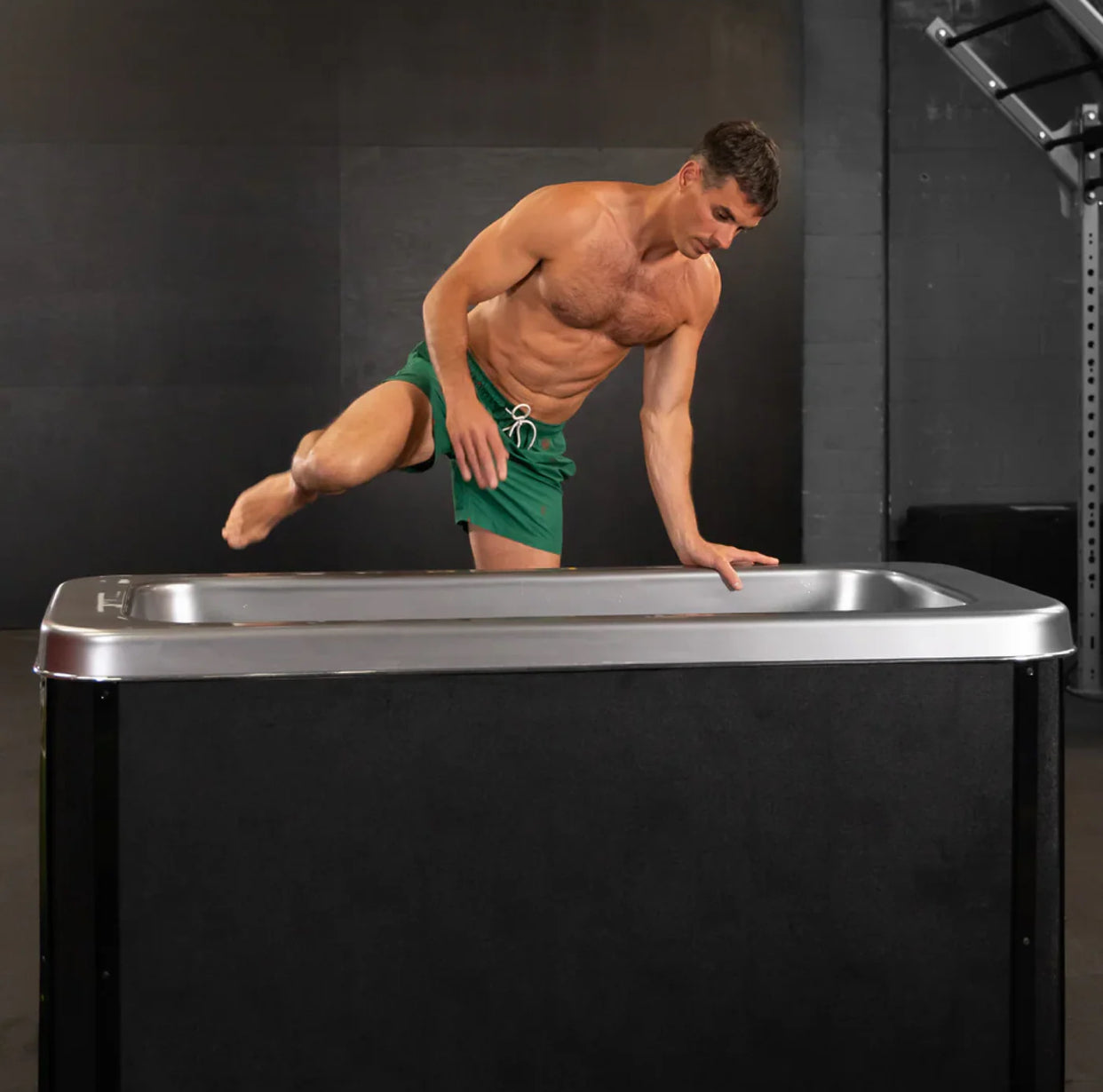Ever stared into your murky Ice Bath and wondered, “Can I reuse this Cold Plunge water?” Short answer: Yes—if you maintain it properly! Whether it’s a Cold Plunge Tub or Ice Bath Tub, this guide dives into smart, sustainable reuse tips to save water, cash, and effort. Keep reading to chill smarter.

1. Yes, But With Conditions: Understanding Water Reuse in Cold Plunges
1.1 The Basics of Reusing Cold Plunge Water
1.1.1 Why Water Quality Matters for Health and Safety
Maintaining clean water is vital to avoid bacteria, mould, or skin irritation.
Poor hygiene can lead to infections or unpleasant odours.
Good water management ensures your plunge stays safe and inviting.
1.1.2 Factors Affecting Water Lifespan (Frequency of Use, User Hygiene, Environment)
How often you use it, the number of users, and outdoor exposure all reduce water life.
Showering before entry and keeping the plunge covered extend longevity.
Warm, humid environments may accelerate bacterial growth.
2. Essential Strategies for Maintaining Clean Cold Plunge Water
2.1 Filtration and Circulation: Your First Line of Defence
2.1.1 The Role of Filtration Systems (Basic, Carbon, High-End Chillers)
Basic filters remove large debris, while carbon filters help reduce odours.
High-end chillers often include advanced filtration.
Choose a system that suits your budget and plunge size.
2.1.2 Importance of Continuous Water Circulation
Circulating water discourages stagnation and bacterial build-up.
It keeps temperature consistent and spreads sanitiser evenly.
Many setups have built-in pumps or circulators.
2.1.3 Filter Maintenance: Cleaning and Replacement Schedule
Clean or replace filters per manufacturer guidelines.
Regular checks prevent clogs and keep water fresh.
Neglect leads to reduced effectiveness and contamination.
2.2 Sanitisation Methods: Keeping Contaminants at Bay
2.2.1 Chemical Sanitisers (e.g., Chlorine, Bromine, Hydrogen Peroxide)
Low-level sanitisers can control bacteria without harsh smells.
Follow safe dosages to avoid skin or eye irritation.
Test water regularly for balance.
2.2.2 Advanced Purification Systems (Ozone Generators, UV Sterilisers)
Ozone and UV systems reduce reliance on chemicals.
They kill bacteria effectively with less residue.
Ideal for people sensitive to chlorine.
2.2.3 Balancing Water Chemistry (pH, Alkalinity, Calcium Hardness)
Balanced water prevents scale, corrosion, or skin discomfort.
Test kits help monitor levels.
Keep pH, alkalinity, and hardness in recommended ranges.
2.3 Personal Hygiene and Physical Maintenance
2.3.1 The Crucial Step: Showering Before Entry
Rinse off sweat, oils, and dirt before plunging.
This simple habit massively improves water lifespan.
It also feels refreshing!
2.3.2 Covering the Plunge When Not in Use
A cover stops leaves, bugs, and dirt entering.
It also reduces evaporation and heat loss.
Essential for outdoor setups.
2.3.3 Regular Skimming for Debris Removal
Use a net or hand skimmer to remove floating debris.
This keeps the water clearer and more inviting.
Do it daily for best results.
2.3.4 Routine Tub Cleaning (Wiping Walls, Deep Cleaning)
Wipe surfaces weekly to prevent slime and biofilm.
Deep clean monthly with safe, non-abrasive cleaners.
This keeps your plunge hygienic and long-lasting.
3. Knowing When It's Time to Change the Water
3.1 Recognising Signs of Deterioration
3.1.1 Visual Cues: Cloudiness, Algae Growth, Surface Scum
Murky water signals it's time to drain.
Green tinges or floating scum mean algae are growing.
Regular monitoring prevents these problems.
3.1.2 Olfactory Cues: Unpleasant Odours (Musty, Swampy)
Smells are an early warning sign of bacteria.
If the water stinks, it's time to refresh it.
No one likes a swampy plunge.
3.1.3 Physical Cues: Slimy Walls or Skin Irritation
Slippery surfaces indicate biofilm build-up.
Skin rashes or irritation are warning signs.
Act quickly to avoid health risks.
3.2 Recommended Water Change Frequencies

3.2.1 Based on Setup (No Filtration vs. Advanced Systems)
No filtration? Change weekly or sooner.
Advanced systems can extend lifespan to 4–6 weeks.
Always monitor quality regardless of tech level.
3.2.2 Based on Usage (Daily, Weekly, Multiple Users)
High usage means more frequent changes.
Solo users may go longer between refills.
Sharing? Change sooner for hygiene.
3.2.3 Best Practices for Draining and Refilling
Drain completely and clean the tub.
Rinse before refilling to remove residues.
Add sanitiser as recommended.
4. Conclusion
Reusing cold plunge water is perfectly possible if you maintain it well.
With good filtration, sanitisation, and hygiene, you’ll save water and money.
Just remember to monitor, clean, and change it when needed.
Takeaway: Respect the water, and it will reward you with safer, sustainable plunges.






